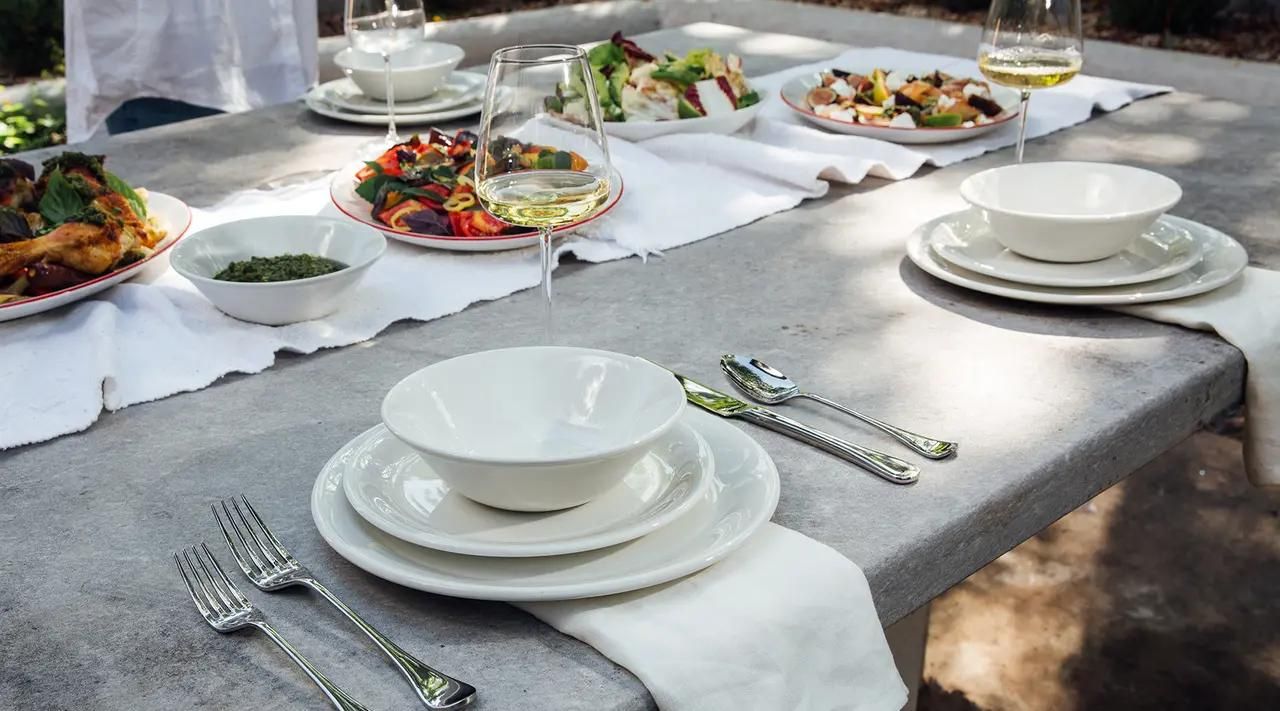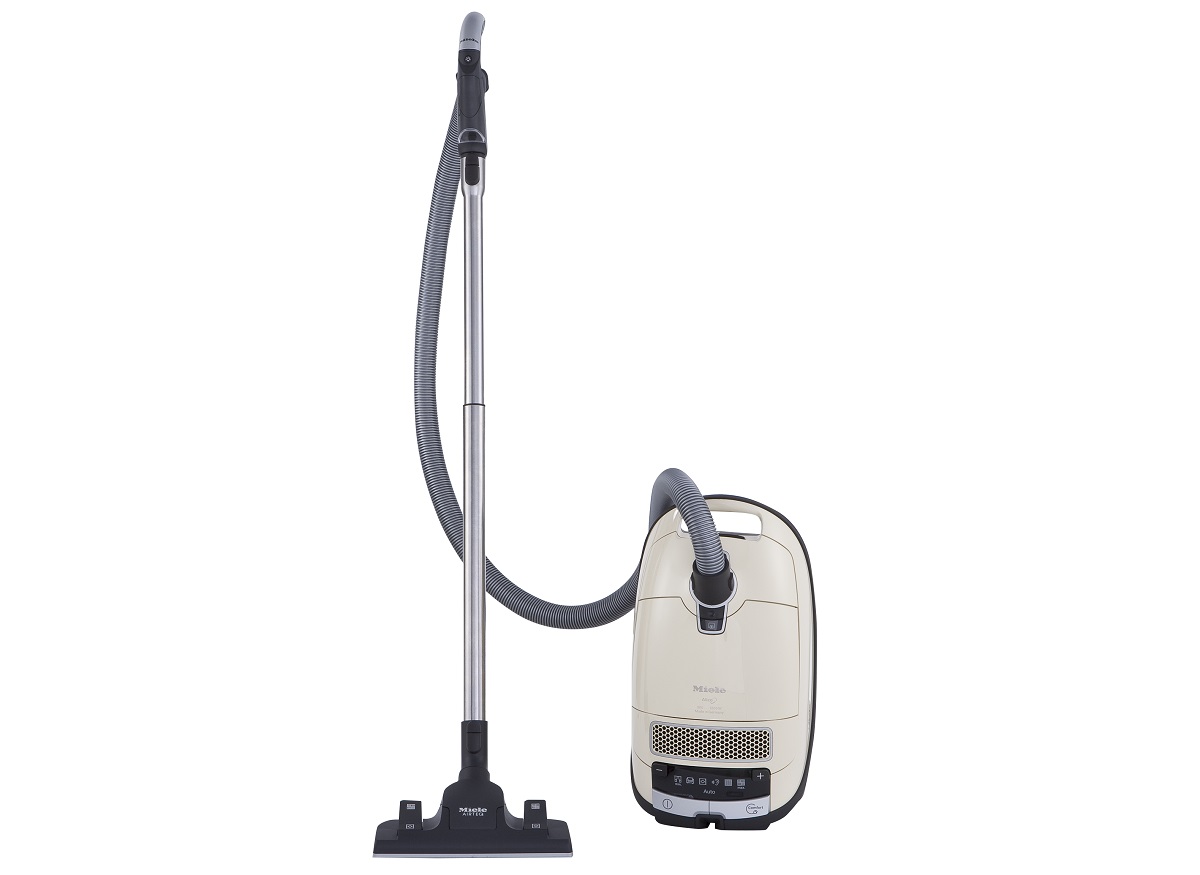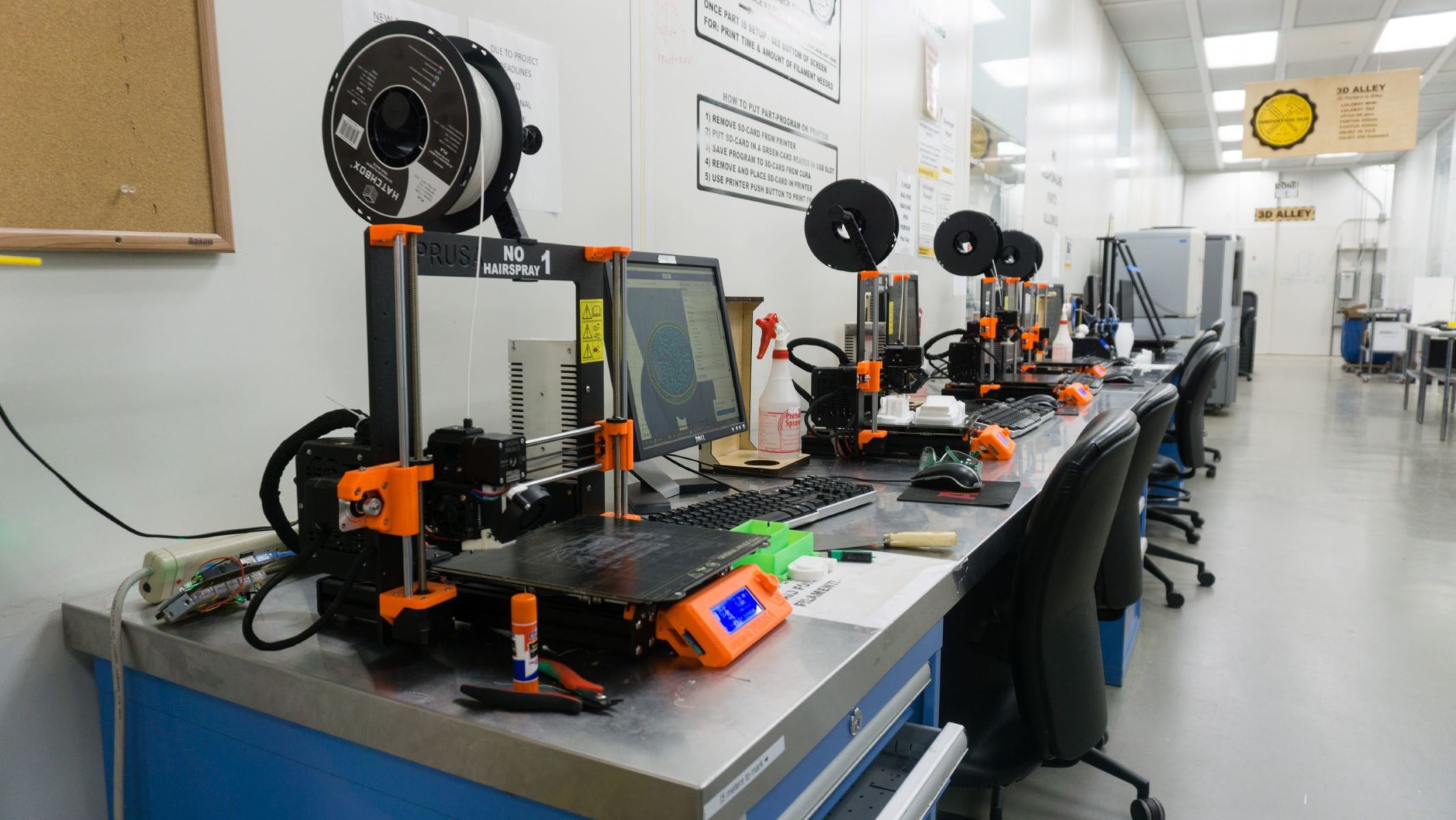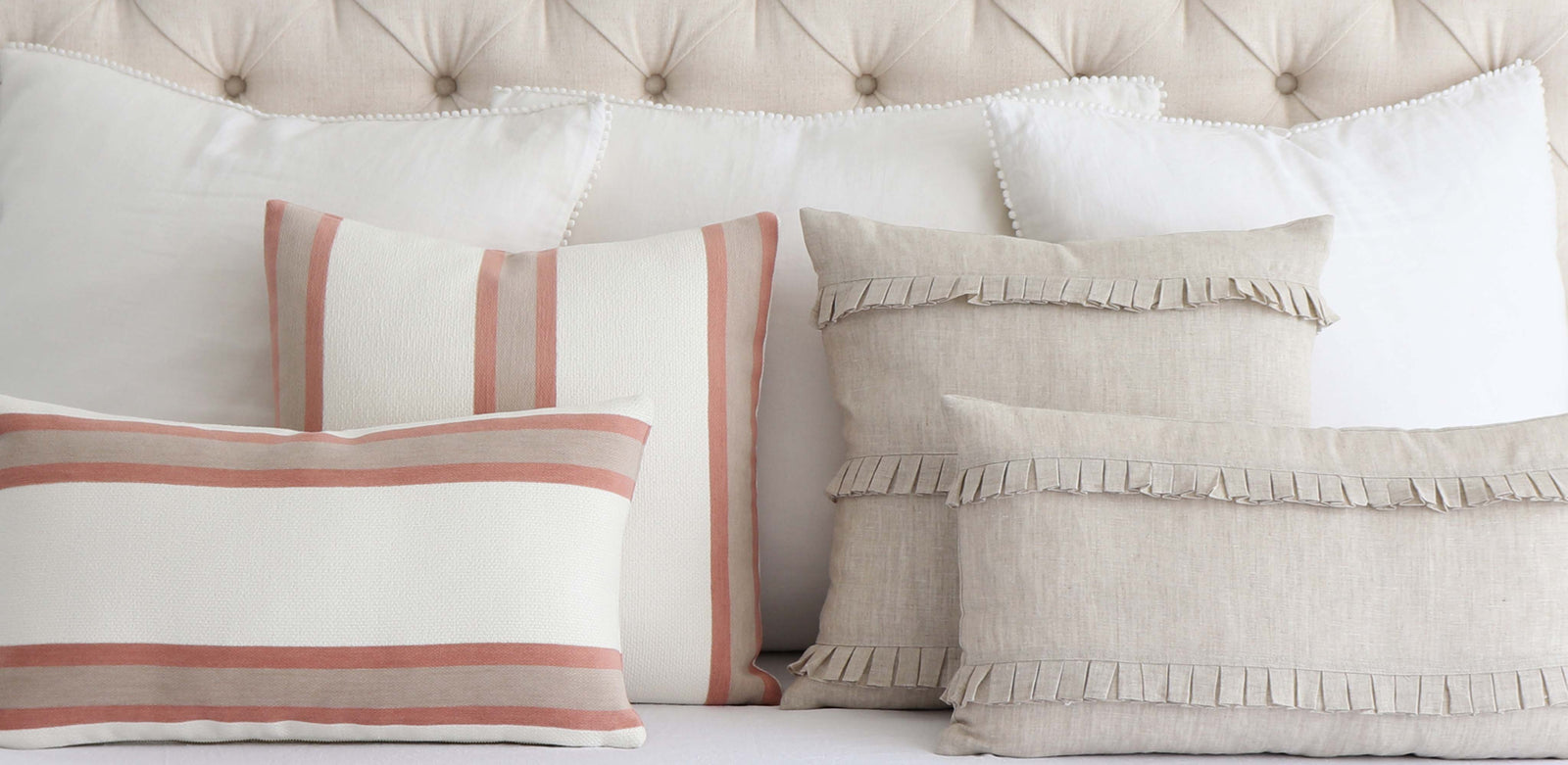Home>Dining>Tableware>Where To Put The Salad Fork When Serving Salad After An Entrée


Tableware
Where To Put The Salad Fork When Serving Salad After An Entrée
Modified: November 1, 2024
Discover the proper placement of tableware when serving salad after an entrée. Find out where to put the salad fork and enhance your dining etiquette.
(Many of the links in this article redirect to a specific reviewed product. Your purchase of these products through affiliate links helps to generate commission for Storables.com, at no extra cost. Learn more)
Introduction
Welcome to the world of tableware etiquette! When it comes to setting the table for a formal meal, every little detail matters. From the placement of the silverware to the arrangement of the plates, each element plays a role in creating an elegant dining experience.
In this article, we delve into the topic of where to put the salad fork when serving salad after an entrée. Understanding the proper placement of the salad fork not only showcases your table manners but also contributes to the overall aesthetic appeal of the table setting.
Whether you’re hosting a dinner party, attending a formal event, or simply want to upgrade your table setting skills, mastering the art of tableware etiquette can definitely come in handy. So, let’s explore the nuances of table setting and discover the appropriate placement for the salad fork!
Key Takeaways:
- Mastering table setting etiquette adds elegance and refinement to any occasion, showcasing your personal style and creating a visually appealing dining experience.
- Proper placement of the salad fork enhances the flow of the meal, demonstrating thoughtfulness and respect for guests, and ensuring a smooth and enjoyable transition from the main course to the salad course.
Understanding Table Setting Etiquette
Table setting etiquette refers to the rules and guidelines that dictate how a table should be arranged for a formal meal. It encompasses everything from the placement of the utensils to the order of the dishes and even the napkin folding technique. Mastering these etiquettes not only showcases your knowledge and refinement but also ensures a smooth and enjoyable dining experience for both you as the host and your guests.
Proper table setting etiquette varies depending on the occasion, formality of the event, and cultural customs. While there might be slight differences in certain details, there are some basic principles that apply universally.
Firstly, each place setting should be aligned and symmetrical. This means that all the plates, glasses, and utensils should be evenly spaced and centered on the table. This creates a visually pleasing and organized table setting.
Secondly, the order of the utensils from left to right is significant. The general rule is to work from the outside in, meaning that the utensils needed for the first course are placed on the outermost side, while those for subsequent courses are laid closer to the plate.
In addition to the placement of the utensils, table setting etiquette also involves the proper use of the napkin, bread plates, and other tableware accessories. These small details may seem insignificant, but they contribute to the overall ambiance and elegance of the dining experience.
By familiarizing yourself with table setting etiquette, you not only demonstrate your proper manners but also create a welcoming and sophisticated atmosphere for your guests. So, let’s dive into the specifics of setting the table and discover the appropriate placement for the salad fork!
Traditional Table Setting
Traditional table setting follows a specific arrangement of tableware that has been passed down through generations. This classic layout is typically used for formal occasions, such as weddings, banquets, or elegant dinner parties.
The traditional table setting begins with a tablecloth that covers the entire table, providing a clean and polished foundation for the tableware. On top of the tablecloth, the individual place settings are meticulously arranged.
Starting from the left side of the plate, the table setting includes a dinner fork, salad fork, and a soup spoon. On the right side of the plate, a knife is placed with the cutting edge facing inward, followed by a soup spoon and a teaspoon. The teaspoon is usually used for stirring coffee or tea after the meal.
A bread plate is positioned above the forks, with a butter knife laid across it diagonally. Above the plate, a water glass and a wine glass for red and white wine are placed. In some cases, a champagne flute may also be included for toasting.
At the top of the plate is where the napkin is often creatively folded. It can be laid flat, or folded into a decorative shape, such as a fan or a swan. The napkin can also be placed in a napkin ring or tucked into the water or wine glass for a neat and tidy look.
The traditional table setting is known for its elegance and attention to detail. It creates a sense of formality and sophistication, elevating the dining experience to an exquisite level.
Now let’s delve into the specific placement of the salad fork within the traditional table setting.
Modern Table Setting
While the traditional table setting remains a classic choice for formal occasions, the modern table setting offers a more contemporary and relaxed approach to tableware arrangement. This style is often favored for casual gatherings, brunches, or intimate dinners.
The modern table setting still maintains some of the basic principles of table setting etiquette but allows for more flexibility and personalization. It embraces a more eclectic and creative approach, reflecting individual style and preferences.
Unlike the symmetrical arrangement of the traditional table setting, the modern table setting embraces asymmetry. This means that the placement of the utensils, plates, and glasses can be off-center and varied.
When it comes to the placement of the utensils, the general rule of working from the outside in still applies. However, the design and style of the utensils can be more diverse. You can mix and match different patterns and materials to create a unique and stylish table setting.
In a modern table setting, the salad fork can be placed to the left of the dinner fork or directly above the dinner plate. This placement allows for easy access and adds a touch of artistic flair to the table.
Alongside the utensils, the modern table setting often includes a charger plate, which acts as a decorative base for the dinner plate. This adds an extra layer of elegance and visual interest to the table.
Similarly to the traditional table setting, the napkin can be folded creatively and placed in various locations, such as next to the plate, in a napkin ring, or tucked into the center of the plate or glass.
The modern table setting encourages creativity and personalization, allowing you to experiment with different colors, textures, and styles. It offers a more relaxed and informal dining experience while still maintaining a sense of sophistication.
Now that we’ve explored the modern table setting, let’s uncover the appropriate placement for the salad fork within this contemporary approach.
Place the salad fork to the left of the dinner fork when serving salad after the entrée. This allows guests to easily reach for the appropriate utensil.
The Role of the Salad Fork
Before we dive into the placement of the salad fork, let’s take a moment to understand the importance of this particular utensil in a table setting. The salad fork plays a significant role in the proper enjoyment of a salad course during a meal.
The salad fork is typically smaller than the dinner fork and has a shorter handle. Its purpose is to assist in cleanly spearing and consuming the leafy greens, vegetables, and other ingredients present in a salad. The tines of the salad fork are designed to effectively secure and lift a variety of salad components without disrupting the overall presentation.
While some may argue that a regular dinner fork can be used for both the main course and salad, using a dedicated salad fork demonstrates attention to detail and proper table etiquette. It allows for a seamless dining experience, as each course has its specific utensil optimized for its purpose.
Having a separate salad fork also ensures that the flavors and textures of the salad remain distinct and uncontaminated by any residues from the main course. It adds a touch of sophistication to the meal and allows for a more refined enjoyment of the salad course.
Now that we understand the significance of the salad fork, let’s move on to the next important aspect: where to place the salad fork in a table setting.
Where to Place the Salad Fork
When it comes to the placement of the salad fork in a table setting, there are two common approaches: the left side and above the dinner plate.
In the traditional table setting, the salad fork is positioned on the left side of the dinner plate, directly to the left of the dinner fork. This placement follows the “outside in” rule, where the utensils needed for the first course are placed on the outermost side. The salad fork is usually slightly smaller and has a shorter handle compared to the dinner fork, making it easily distinguishable.
In the modern table setting, the salad fork can be placed above the dinner plate. This placement adds a creative and artistic element to the table setting. By positioning the salad fork above the plate, you create a visually interesting arrangement and allow the fork to become an accent piece in the overall design.
Alternatively, you can also incorporate a unique twist by placing the salad fork diagonally across the top of the dinner plate. This creative placement adds a touch of elegance and can be a great conversation starter at the table.
Ultimately, the choice of where to place the salad fork depends on the style and formality of your event, as well as your personal preference. Both the traditional and modern placements have their own charm, and you can select the option that best suits your table setting vision.
Remember to ensure that the salad fork is easily accessible to your guests, allowing them to effortlessly transition to enjoying their salad course. Proper placement not only enhances the functionality of the table but also adds sophistication and refinement to the overall dining experience.
Now that we know where to place the salad fork, let’s explore some additional etiquette tips for serving salad after an entrée.
Etiquette Tips for Serving Salad After an Entrée
Serving salad after the main course is a common practice at many formal dining events. Here are some etiquette tips to follow when serving salad after an entrée:
1. Timing: Wait for all the main course plates to be cleared before serving the salad. This allows guests to fully enjoy and appreciate each course without feeling rushed or overwhelmed.
2. Freshness: Ensure that the salad is prepared fresh and served at the ideal temperature. Cold salads should be chilled, and warm salads should be served promptly to maintain their flavors and textures.
3. Presentation: Pay attention to the presentation of the salad. Use a large, decorative serving bowl or individual salad plates for an attractive display. Garnish the salad with fresh herbs or edible flowers to add a touch of elegance.
4. Dressing: Consider offering a selection of dressings to accommodate different tastes. Serve the dressing on the side or drizzle it lightly over the salad, allowing guests to adjust the amount according to their preference.
5. Utensils: Provide each guest with a fresh salad fork for enjoying the salad course. If the salad is served in a separate plate, place the clean fork to the left of the salad plate. If the salad is served directly on the dinner plate, make sure the salad fork is easily accessible.
6. Salad Serving Order: When serving the salad, start from the left side of the guest of honor and continue in a clockwise direction. Ensure that each guest receives an appropriately portioned serving.
7. Serving Assistance: If you have a large number of guests, consider hiring a server or asking a trusted friend or family member to assist in serving the salads. This ensures that everyone receives their salad promptly and maintains the flow of the meal.
8. Small Bites: Encourage guests to take small bites of the salad and utilize proper table manners. Avoid talking with a full mouth and chew with your mouth closed. Allow guests to enjoy the flavors and textures of the salad without feeling rushed.
9. Clearing: Once all guests have finished their salad, promptly clear the plates to create space for the next course or dessert. Clearing the table in a timely manner keeps the dining experience seamless and enjoyable for everyone.
Remember, etiquette is not about strict rules but rather about creating a comfortable and pleasant dining atmosphere. By following these tips, you’ll ensure that your guests feel valued and have a delightful experience during the salad course.
Now that you have a better understanding of the etiquette for serving salad after an entrée, let’s conclude our exploration of tableware etiquette.
Conclusion
Tableware etiquette is a fascinating and important aspect of formal dining. Understanding the proper placement of tableware, including the salad fork, adds elegance and refinement to any occasion. Whether you’re hosting a dinner party, attending a formal event, or simply want to elevate your everyday meals, mastering table setting etiquette is a valuable skill that enhances the overall dining experience.
Through this article, we’ve explored the traditional and modern table settings, discussing the significance of the salad fork and the appropriate placement. Both styles offer their own unique charm, allowing you to showcase your personal style and create a visually appealing table setting.
Additionally, we’ve discussed etiquette tips for serving salad after an entrée. From timing to presentation and providing fresh utensils, these tips ensure a smooth and enjoyable transition from the main course to the salad course, enhancing the overall flow of the meal.
Remember, tableware etiquette is not about rigid rules but about creating a welcoming and elegant dining atmosphere. By paying attention to these details, you demonstrate thoughtfulness and respect for your guests, making them feel valued and appreciated.
So, the next time you host a formal meal or attend a special event, take the time to set the table with care and consider the proper placement of the salad fork. These small gestures can make a significant difference in the overall ambiance and enjoyment of the meal.
Now, armed with the knowledge of table setting etiquette and the appropriate placement of the salad fork, go out and create memorable dining experiences that leave a lasting impression on your guests!
Frequently Asked Questions about Where To Put The Salad Fork When Serving Salad After An Entrée
Was this page helpful?
At Storables.com, we guarantee accurate and reliable information. Our content, validated by Expert Board Contributors, is crafted following stringent Editorial Policies. We're committed to providing you with well-researched, expert-backed insights for all your informational needs.






0 thoughts on “Where To Put The Salad Fork When Serving Salad After An Entrée”